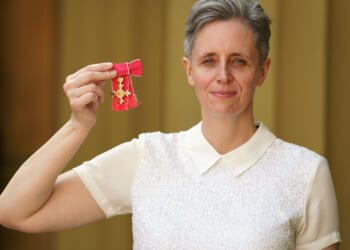(LifeSiteNews) — Denmark Prime Minister Mette Frederiksen apologized to Greenland’s indigenous women for eugenic forced contraception during a decades-long period ending in the 1990s.
From the late 1960s to 1992, Danish health authorities aimed at curbing the Inuit’s population by forcing about 4,500 women and teen girls — about half of the island’s fertile females — to have a contraceptive intrauterine device (IUD) inserted against their will, Le Monde reported.
Many of the women became sterilized as a result, and “almost all of them have suffered from physical or psychological problems.”
Former Greenland Prime Minister Mute Egede called the program a “genocide,” as the population growth of Greenland significantly slowed down in the 1970s from previous high numbers.
A few cases of forced contraception took place after the 1970s as well, and as late as 2018, the BBC reported.
“Today, there is only one real thing to say: Sorry,” Frederiksen solemnly said in an address at Greenland’s capital, Nuuk, at which victims were present.
“Sorry for the wrong that was done to you because you were Greenlanders. Sorry for what was taken from you, and for the pain it caused,” said Frederiksen, as at least one victim wiped away tears.
Victim Kirstine Berthelsen, who had two ectopic pregnancies and the removal of one fallopian tube as a result of her forced IUD, told Agence France-Presse (AFP) the apology was healing for her.
“I can then move on in my life without hatred, anger, and negativity eating me up from within,” Berthelsen said.
Katrine Petersen underwent a forced abortion by Danish doctors before being forcibly fitted with an IUD.
“Because of my age, I didn’t know what to do,” she told ABC News, in tears. “I kept it inside me and never talked about it.”
“I could be a grandparent today if they hadn’t taken away my child,” she said in another interview with the Associated Press. “I probably would have had a much better life than I did.”
When she married years later, she was unable to have children. Now 52, she says the traumatic events led to “anger, depression, and too much to drink.”
Last year, almost 150 Inuit women sued Denmark seeking compensation from its health ministry for the human rights violations they suffered. Most of these women were under 18 at the time they were fitted with the IUDs.
Greenland was a colony of Denmark until 1953 and has increasingly gained more independence over the past decades but remains an autonomous territory within the Kingdom of Denmark.
Eugenic sterilization
Denmark was not the only country that engaged in forced contraception and sterilization in the post-World War II era.
Eugenics-based sterilization programs of native Americans and those deemed undesirable, for instance, due to mental health issues, were active in the United States and Canada until the 1970s. In the U.S., an estimated 100,000-150,000 people were sterilized each year under duress. In Sweden, around 60,000 people, mostly women, were forcibly sterilized under the country’s eugenics law, active from 1935 to 1975.
Other countries with similar programs included Czechoslovakia, Brazil, Puerto Rico, Bangladesh, India, and Japan. The worst eugenic program was run by communist China, whose one-child policy included millions of forced sterilizations and abortions.
In the decades after the Second World War, the narrative that the world would soon become “overpopulated” was widespread and contributed to the implementation of eugenic policies and propaganda campaigns for contraception and abortion.
In 1968, the Club of Rome was founded, an organization that gained significant political influence and claimed that rapid population growth would destroy the planet. In the same year, Paul Ehrlich published his infamous book, The Population Bomb, warning of a population explosion that would lead to worldwide famines by the end of the 1970s.
The opposite of his prediction is now coming to fruition: Most countries in the world have birth rates below replacement, resulting in depopulation spirals which “no society in history has been known to come out of,” according to demographer and data analyst Stephen Shaw.

















